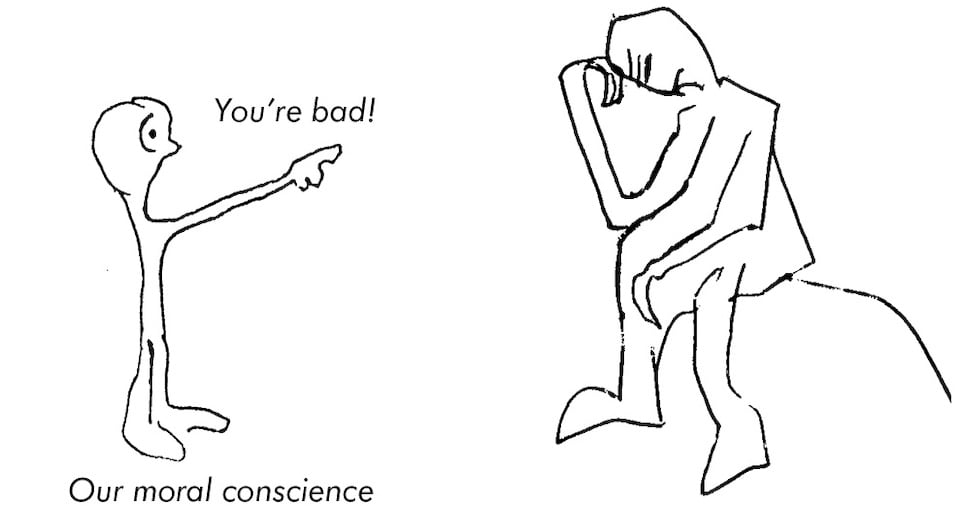The Great Exodus
36. The Early Sobered Adolescent Stage of Adolescent Humanity
This is our Early Sobered Adolescentman stage, the time leading up to resignation to a life of denial of the issue of the human condition.
The species: the first half of Homo habilis’ reign—2 to 1.5 million years ago
The individual: 12 and 13 years old

Drawing by Jeremy Griffith © 1991-2011 Fedmex Pty Ltd
In the development of the conscious self’s conflict with the integratively orientated instincts, namely the emerging problem of the human condition, by late childhood children—or, if we are looking at the situation from our Childman ancestors’ point of view, Childmen—were trying to cope by lashing out at the world. Eventually, and this normally happened at about 12 years of age, the child realises that protesting the injustice of the world is not going to change it, and that the only possible way of solving the problem is to find the reconciling understanding of why the criticism it was experiencing was occurring. From being a frustrated extrovert protestor the child changes orientation Page 149 of
PDF Version completely and becomes a sobered, deeply thoughtful, troubled and serious introvert. This change from being a frustrated protestor to being a deep thinker marks the change from childhood to adolescence, and society recognises this very significant shift by having children move from one stage of schooling generally called primary school to a new stage called secondary school at 12 to 13 years of age.
In terms of the dominating concern for children growing up in a world already upset, as children have to do today, children progress from the ‘Peter Pan’, don’t-want-to-grow-up, 11 year old stage to finally accepting they have to face reality, in which case the need to understand reality also becomes a priority. As was mentioned in Section 5, they ask: ‘Mum, why do you and Dad shout at each other?’ and ‘why are we going to a big, expensive party when the family down the road is so poor?’ and ‘why is everyone so unhappy and preoccupied?’ and ‘why are people so fake?’ and ‘why do men kill each other?’ and ‘why did those people fly those planes into those buildings?’ Young adolescents normally only ask these real questions about reality for a brief period of time because they soon realised that for some inexplicable reason adults won’t or can’t answer their questions and are in fact made distinctly uncomfortable by them. While adults haven’t been able to cope with the confronting questions that are raised by the utter hypocrisy of human behaviour and have made themselves immune to it, children are only too aware of the hypocrisy. As Nobel Prize-winning biologist George Wald pointed out, ‘The great questions are those an intelligent child asks and, getting no answers, stops asking’ (quoted in Arthur Koestler’s 1967 book The Ghost in the Machine, p.197 of 384). As was pointed out in Section 23, it is the silence, effective denial of the issue of the human condition by the adult world that has been particularly devastating for young people. There is this immense issue of the horrific state of the world and the adults in it, there is this ‘elephant in the living room’ that nobody will talk about, and worse everyone is carrying on as if it doesn’t exist. In terms of their demeanour, while 12 year old children have made the decision to try and face the reality of this extremely messed up, wrong, dishonest world they still struggle mightily to cope with the horror of it. While they are becoming subdued and introverted there is still a certain feisty, protesting spirit in them that fights against the absolute wrongness of everything they are looking at.
By the age of 13 the search for understanding of reality has deepened and with nobody able to explain the horror of the world, or even prepared to talk about it, today’s adolescent very much retreats into their own world, typically locking themselves in their room where they listen to loud music through their headphones.


